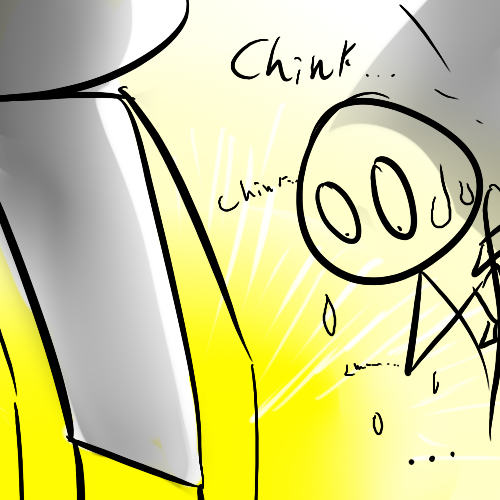Hey Art Nerd,
I was hanging out at a museum yesterday (yeah, I’m cool) and was wondering why it took so long for drawings of people to actually look like people. There were Egyptian casks, Greek sarcophagi, and Byzantine mosaics, all with flat people with weird eyes and strange poses. The Greek seems really weird, because there was also a huge exhibit of statues, and those looked like real people. How can it be easier to make a ton of rock look like a person than a little drawing?
Thanks,
Seyonne
***
First off, good on you for going over to the museum! Lots of interesting stuff to see there… aside from the mildly pretentious contemporary art.
When it comes to three-dimensions, art gets a bit… strange. You see, three-dimensional, real-world objects are a bit hard to flatten down without having a grasp of all that fun stuff about perspective, vanishing points, and anatomy. And when it comes to ancient art… they really didn’t have any kind of grasp on it.

“Dude, how do I draw this?” “Be a sculptor, nerd.”
It’s a lot harder to comprehend a three-dimensional object as two-dimensional without a grasp of perspective and volume. And that grasp of perspective and volume is, nowadays, helped by vanishing points and perspective.
Now, vanishing points are small dots that artists often use to define where the lines of a three-dimensional image will converge. If, say, a person were to look down a long, straight road, he or she would notice that the road’s ends, both the left and the right, will eventually converge onto a single point at the horizon. That point would be known as the “vanishing point,” were it a drawing.
In art, that concept creates the illusion of depth, as objects that follow these lines will become smaller the closer they are to the vanishing point. There’s a lot more to cover in this particular area, but that’s just the super-short cliffnotes version to help define what it exactly is.
And so, this lack of vanishing points was perpetuated in ancient cultures because, wouldn’t you know it, art methods tended to be passed down.
As for the statues, in museums, Classical Greek sculptures are among the most popular to display because, hey, those incredibly-well-sculpted butts and penises tend to attract attention. And the sculptures tend to be fantastic.
This is because, and this is partially from experience, it’s easier to make a three-dimensional sculpture of a three-dimensional object. Chiseling, while difficult from the physical perspective of taking a chunk of rock and having to chop into it repeatedly, still means that you don’t have that weird transfer from three-dimensions to two-dimensions. You have a model that you can view from all sides, and you can easily just run in, take a look at all of the angles of their arm, and then sculpt from there.

I’m not implying anything.
That said, while I do like art, drawing art, and criticizing art…

Ooooooh, I love criticizing art
…I am by no means an art history expert. There’s a whole field dedicated to this stuff, and to why certain kinds of art are the way they are. So look some of it up!
Now, and just to throw some names out there, you can go ahead and check out Sam Blain and Jennifer Roberts. You can probably even send them emails and mail and whatnot. They’re busy but it wouldn’t hurt to try.
You could also look up Johann Joachim Winkelmann‘s research, but emailing him probably won’t work, since he’s dead. He’s still got some interesting stuff on the topic, despite the whole, y’know, “being dead” part.
-The Art Nerd
PS: I am just a stellar example of quick updating, aren’t I?